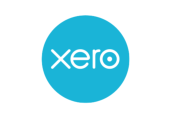Have you ever used your phone to make a call over the Internet instead of a regular phone line? If, you’ve used a VoIP system. VoIP stands for Voice over Internet Protocol, which means that instead of sending your voice over a traditional phone line, it travels through the Internet.
Renier Schrenk from VoIPstudio joined Josh for a deep dive into VoIP Systems to explain how they might help your business.
How VoIP Works
VoIP (Voice over Internet Protocol) is a technology that allows users to make and receive telephone calls over the Internet. It is a cost-effective and efficient way of making international phone calls, eliminating the need for expensive long-distance services.
VoIP works by converting analog audio signals into digital data packets which are sent over the internet. The converted digital data packets are then routed through an IP network and converted back into analog audio signals at the other end of the call, allowing for clear, uninterrupted conversations between both parties.
VoIP also enables users to access additional features such as caller ID, conference calling, video conferencing, and more. It has revolutionised telecommunications by allowing people to communicate with each other in ways never before possible. In recent years, VoIP has become greatly useful for businesses all over the world.
What is the Difference Between VoIP and a Traditional Phone System?
Renier explains, “The main difference is that traditional telephone network is traditional analog and VoIP is digital. Analog is not as versatile as digital is nowadays, and with that comes a lot of benefits.”
He adds, “The first analog recordings from recorded tape players were no longer valued as they went over further distances. You’d get weird noises and interruptions. But with VoIP technology, it’s like jumping onto Spotify with just one click instead of having to go through your CD collection to find a song.”
When Should a Business Switch from Traditional Phone to VoIP?
There are different flavours of VoIP and the way it can work, but why should a business jump from their existing landline to a cloud-based VoIP phone system?
Renier emphasises the versatility of VoIP, “Traditional phones have less versatility. For example, when you are on a call using a traditional wired phone, you can’t move from one point such your office to somewhere else.”
One of the advantages of switching to VoIP is you can easily make a call using your laptop or desktop computer. You can do so anywhere if there is Wi-Fi or broadband.
With traditional phones, you need a traditional phone line coming into your property. You then have to have it wired to different rooms, and then you end up having to call an electrician if you want to move the point somewhere else whereas a big advantage of VoIP is it’s wireless; you can easily have that on your laptop that can be going over Wi-Fi, you can move your desk, and it’s not going to cost you any money.
A lot of businesses fail to take into account the physical infrastructure costs of landlines that are not involved in VoIP, which is more flexible.
Does VoIP suit your business needs? Contact Dorks for a demo!
Renier adds, “I’ve known a lot of people who work from different locations. When they move from the UK to the US every few months or every few weeks, they’d pack their laptop up and plug in their VoIP phone and use it over the Internet.”
The better quality of calls is another advantage of VoIP. You don’t get annoying echoes during calls because the whole phone system is digital and faster than a phone system that runs on copper lines.
What is the main disadvantage of VoIP?
 If you are planning to switch to a VoIP system for your business, it’s good that you’re aware of some of the potential downfalls.
If you are planning to switch to a VoIP system for your business, it’s good that you’re aware of some of the potential downfalls.
Renier says, “VoIP needs a stable Internet connection. If you are in a place where the connection is a bit spotty, you might need to find a way to strengthen it. Stability is important because it’s a constant transfer of data. You also need to secure an emergency or backup Internet service connection because as soon as the power goes out, your Internet goes out, which means you won’t have VoIP either. During a blackout, as long as you have a traditional non-cordless phone, electricity is provided through the telephone line. If you’ve got a bad Internet or satellite Internet connection, it might not be the best solution.”
VoIP FAQ
Q: If you’ve got your current phone system, can you still use a normal phone with VoIP?
A: You can. You just need to look for VoIP providers with the most affordable rates in the area. Some people have their phones at home or in their business, and they are looking to swap to VoIP. So what other companies provided was this little box that you plugged into an Internet cable and plug your phone in. This transforms your analog phone into a digital phone. This is way more cost-effective and less expensive.
Q: Will you lose your business phone number if you move from a traditional phone system to VoIP?
A: There is a porting or migration process depending on the country. Germany has quite strict rules when it comes to telecoms. It can take quite a long time to complete. But in the US, they have this intense competition amongst telecoms providers. The main thing is while you’re waiting for the porting to happen, your number doesn’t stop working.
Most VoIP service providers also allow you to have an app on your phone that you can use to make a call using a professional number or business number. It’s great if you don’t end up getting calls at midnight from a client through your mobile.
Q: What are the features to look for when switching to VoIP?
A: One of the cool things about a cloud-based VoIP phone system is you can add your hold music, which could be promoting your products. Ultimately, when looking at your options, check if the VoIP system is simple and easy to use while giving you versatility.
Do you want to see all the features that can help streamline your communication? Contact Dorks for a demo!
Setting Up VoIP for Your Business
Note that when you switch to VoIP, you can have it set to automatically go to a new number and when you’re calling outbound, any of your staff can use the number you’ve got. The new number will appear even if people are still calling the old number, so you don’t have to worry about missing sales or enquiries.
Renier says, “In Australia, the average onboarding time would take around 30-35 days. This means that you can change the solution without having to worry about being locked into another contract. A lot of providers can offer a month or a long-term contract if you need additional features. But take note that they might be strict with cancellation fees. What I can recommend is you ask the provider if they can provide a trial so that you can test it out and make sure it can work for you.”
He adds, “It’s always a good idea to discuss what you need more than what you want because once your needs are met, you will have a strong foundation. A good thing to consider is what is special about you and what you do, and how can VoIP improve that. Any company can get away with any kind of telephone system, but if you go for VoIP, it’s something that will not just replace the phone system—it’ll enhance it. And how can VoIP make it better? There are loads of features out there, and those things can make a company sound better and look better.”
The Best VoIP Phone System for Modern Business
Everybody has different needs. At Dorks, we prefer a cloud-based VoIP phone system. Other phone systems can work by charging you per user, per minute or per call. And that’s where you need to work out what works best for you.
Do you want to set up a custom VoIP system for your business? Contact us for a free consultation.
[module-379]
































